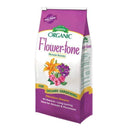
Images Depict Mature Plants
Nandina Gulf Stream for Sale Online
Nandina Gulf Stream is one of the most colorful compact shrubs for year-round foliage interest. It's an older variety that many of the new nandinas are bred and selected from. It features a variety of leaf colors on fairly dense, evergreen foliage.
New growth is a bronze color with orange highlights. Older leaves range from blue-green to gold and red. Gulf stream Nandina is a tough plant, tolerant of urban conditions. Unlike the other "older" heavenly bamboos, it is bushy and compact, reaching only 2.5 to 3 feet high. It makes a fine informal hedge or as a foundation plant. You can also use this shrub in containers or the mixed border.

| Hardiness Zone: | 6-11 |
|---|---|
| Mature Height: | 2.5 to 3 feet |
| Mature Width: | 3 feet |
| Classification: | Dwarf, Compact,Broad leaved evergreen shrub |
| Sunlight: | Full Sun to Part Shade |
| Habit: | large mounding |
| Foliage: | Scarlet red new growth, changing to blue-green |
| Flower Color: | White |
| Pruning Season: | Pruning not needed |
| Soil Condition: | Any well drained soil |
| Water Requirements: | Water well until established |
| Uses: | Extremely attractive when used as in the mixed border, or containers |
How to Care for Nandina Gulf Stream
Before you purchase your Nandina Gulf Stream, be sure to read the recommended care instructions to ensure your plant remains happy and healthy for years to come!
How do I water Nandina Gulf Stream?
After backfilling and lightly compacting the mix of existing soil and compost, give the Nandina Gulf Stream a deep watering. Most of the water you put on the plant at first will run away from the plant until the soil is soaked. Check the plant daily for the first week or so and then every other day after. Water your shrub using the counting method for the first few weeks. Count to 5 for every one-gallon container your plant is in. For example, if your plant is in a one-gallon pot, you would water until you counted to 5. If your plant is in a three-gallon container, you should water until you counted to 15. You will want to water the bushes regularly after planting until well established. We like to tell folks that when watering Nandina or any plant, for that matter, it's best not to water the foliage of the plant. Water at the base of the plant near the soil line only. Soaker Hoses can also be used to water when planting a long hedge.
How do I fertilize Nandina Gulf Stream?
Plants such as Nandina Gulf Stream grow best when fertilized once in the spring and again in early summer. We recommend an Organic fertilizer that tends to release nutrients over a long period. If chemical fertilizers are used on your Nandina Gulf Stream, applying a slow-release, balanced fertilizer once a year in the spring is probably the simplest solution. However, slow-release is certainly not the only way to fertilize Nandina, such as Nandina Gulf Stream. A less expensive fast-release fertilizer such as a 10-10-10 will work just as well if applied twice during the summer. An organic method of applying manure and compost around the roots produces excellent results and improves the condition of the soil. Don't fertilize Nandina Gulf Stream after August. Fall is the time for Nandina to begin preparing for dormancy. Applying fertilizer at this time may stimulate new growth that will be too tender to withstand the winter. Over-fertilization can be much more detrimental than under-fertilization. Fertilizer burn can occur when too much fertilizer is applied. This will result in the roots drying out, becoming damaged, or even dying.
How do I mulch Nandina Gulf Stream?
We highly recommend that you mulch your Nandina Gulf Stream with either a ground hardwood mulch or a ground cypress mulch depending on your local availability. Any mulch will do, but cypress or hardwood mulch will be of a higher quality and provide better nutrition overall as they break down. Mulching helps to keep weeds away, which will compete with your new investment in water and nutrients. A 2 to 3-inch layer of mulch is sufficient but remember to take care not to cover any part of the stem with mulch. It is better to leave a one-inch gap of space between the mulch and the stem or trunk of the plant.
How Do I Plant My Nandina Gulf Stream?
When planting your newly purchased Nandina Gulf Stream plant, dig a hole twice as wide as the root system but not deeper. Depending on the quality of your existing soil, you may need to add locally sourced compost or topsoil to the back-fill soil. We do not recommend using straight topsoil or compost as a back-fill soil because more times than not, these products will retain entirely too much moisture and will cause the root system to rot. Adding compost or topsoil will help the young feeder roots of Nandina Gulf Stream to spread through the loose, nutrient-rich soil, much easier than if you used solely the existing soil, which more times than not will be hard and compacted. The most common cause of plant death after transplanting is planting the new plant too deep. A good rule is that you should still see the soil the plant was grown in after back-filling the hole. Bio-tone starter fertilizer is a starter fertilizer that provides plants with a mycorrhizal fungus. It is a naturally occurring beneficial fungus that colonizes the new growing roots of plants. It creates a barrier between the roots and fungus and pathogens that can cause root rot.















